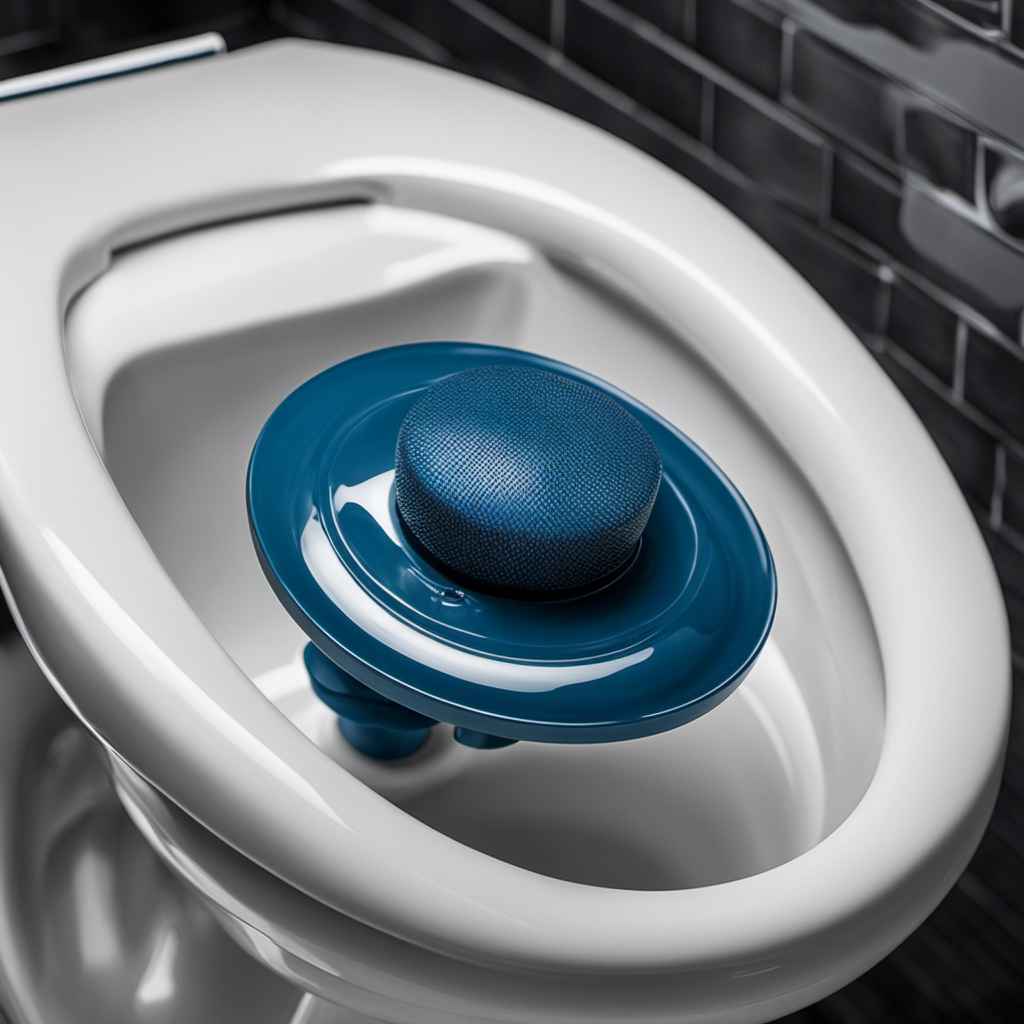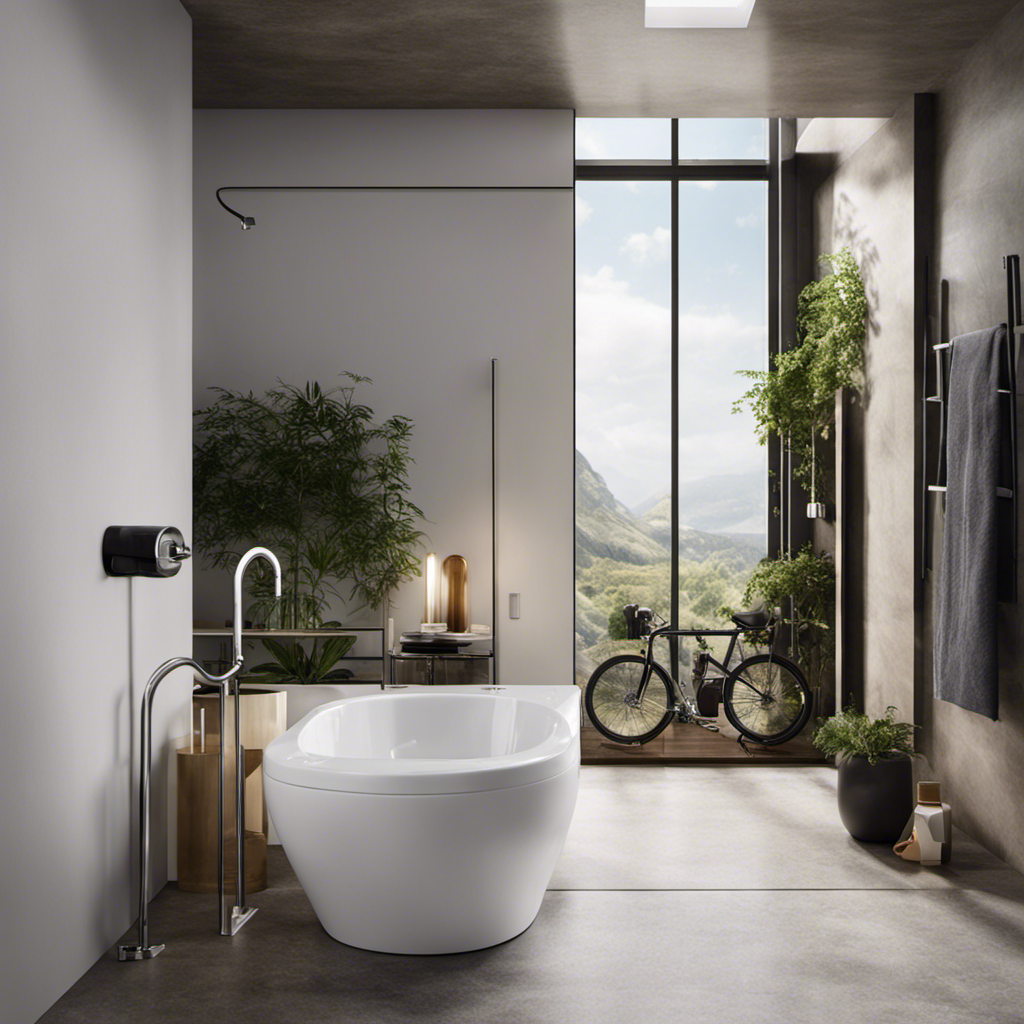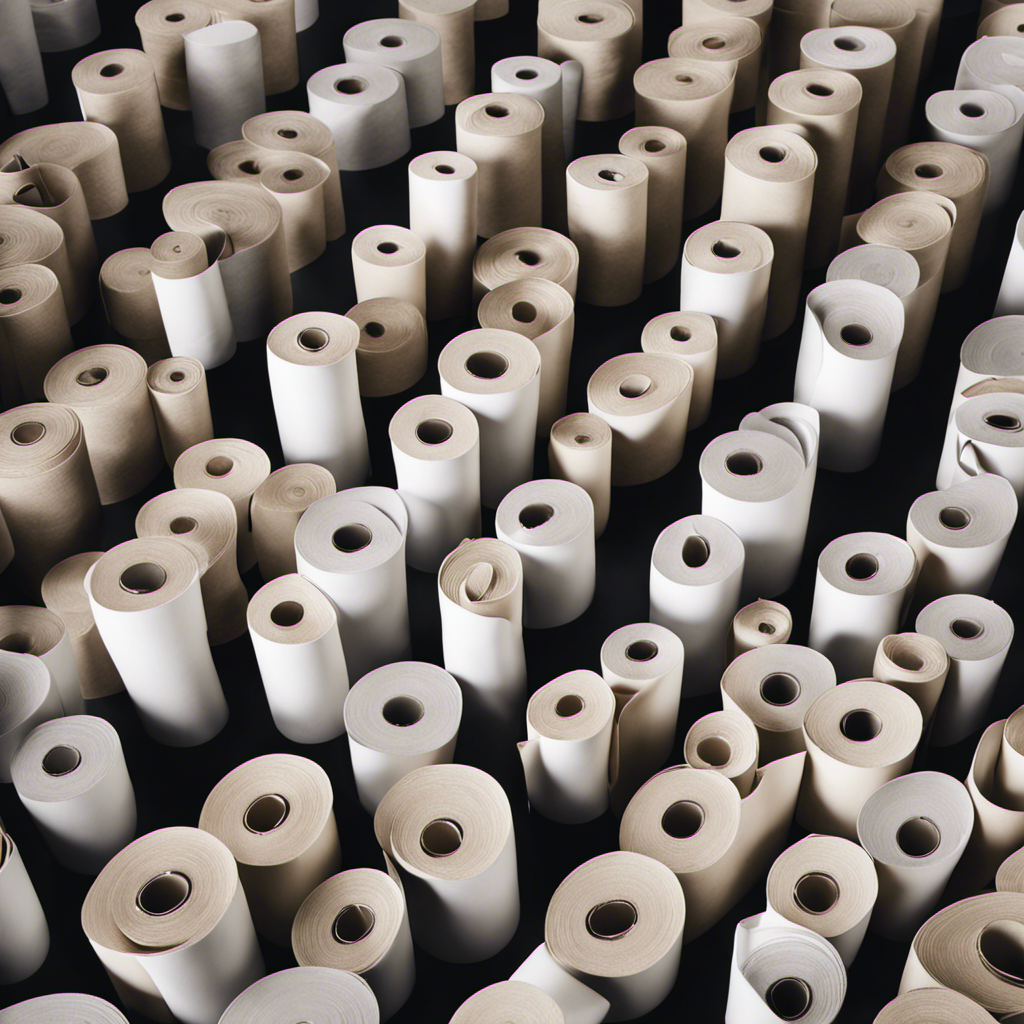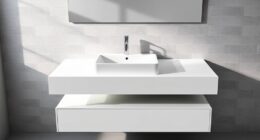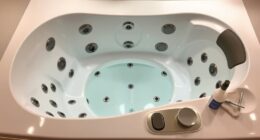I’ve had my fair share of plumbing mishaps, and one thing I’ve learned is that a plunger can be a lifesaver when it comes to unclogging a toilet. Whether it’s a sudden blockage or a recurring issue, knowing how to properly use a plunger can save you time, money, and a lot of frustration.
In this article, I’ll guide you through the different types of plungers, the correct technique for maximum effectiveness, troubleshooting common issues, and even preventative measures to avoid future toilet clogs. Trust me, you’ll want to keep this knowledge handy!
Key Takeaways
- Cup plunger and flange plunger are two common types of plungers for unclogging toilets.
- It is important to prepare the toilet and surrounding area by clearing any obstructions, regularly cleaning the toilet and pipes, and teaching everyone to flush only waste and toilet paper.
- Proper plunging technique involves positioning the plunger over the drain hole, understanding how it works, and maintaining a clean plunger with a tight seal.
- Troubleshooting tips include checking the plunger’s seal, cleaning it regularly, trying a toilet auger or drain snake if plunging doesn’t work, and seeking professional help if needed.
Types of Plungers for Unclogging Toilets
To unclog your toilet, you’ll want to know the types of plungers available.
There are two main types of toilet plungers: the cup plunger and the flange plunger.
The cup plunger is the most common type and consists of a rubber cup attached to a wooden or plastic handle. It is suitable for unclogging standard toilets and sinks.
The flange plunger, also known as a toilet auger, has a longer handle and a rubber flange at the end. It is specifically designed for toilets and can provide more forceful unclogging.
When using a plunger, make sure to create a seal by pressing it firmly against the drain opening. Then, use rapid up and down motions to create suction and dislodge the clog.
Remember to use a plunger in conjunction with other unclogging techniques if needed.
Preparing the Toilet and Surrounding Area
Before starting, make sure the area around the toilet is clear and remove any items that may get in the way. To prevent toilet clogs in the first place, there are alternative methods you can try. Here are four effective strategies:
- Regular maintenance: Regularly clean your toilet and pipes to prevent buildup and blockages.
- Proper flushing: Teach everyone in your household to flush only toilet paper and waste, avoiding items like wipes or sanitary products.
- Water pressure adjustment: If your toilet has a strong flush, consider adjusting the water pressure to prevent forceful clogs.
- Hot water and dish soap: Pouring a mixture of hot water and dish soap into the toilet can help dissolve minor clogs.
Proper Plunging Technique for Maximum Effectiveness
Now, you’ll want to position the plunger over the drain hole, ensuring a tight seal with the toilet bowl. This will create the necessary suction to dislodge the clog. To increase the effectiveness of your plunging technique, it’s important to have a good understanding of how a plunger works. The table below provides some plunger maintenance tips and alternative methods for unclogging a toilet without a plunger:
| Plunger Maintenance Tips | Alternative Methods for Unclogging a Toilet without a Plunger |
|---|---|
| Regularly clean the plunger to prevent buildup of bacteria and debris | Use a toilet auger or snake to break up the clog |
| Check the plunger’s rubber seal for any cracks or damage before use | Create a DIY drain cleaner using baking soda and vinegar |
| Store the plunger in a clean, dry area to prevent mold or mildew growth | Use a mixture of hot water and dish soap to loosen the clog |
Troubleshooting Common Issues While Using a Plunger
If you’re experiencing difficulty while plunging, try adjusting the angle or pressure to create a stronger suction. Here are some troubleshooting tips to help you with common issues while using a plunger:
-
Check the plunger’s seal: Ensure that the rubber cup of the plunger is making a tight seal around the drain. If it’s not, adjust the angle or reposition the plunger for a better seal.
-
Maintain your plunger: Regularly clean your plunger to prevent any buildup of debris or bacteria. Rinse it with hot water and a disinfectant, and let it air dry before storing.
-
Try alternative methods: If plunging doesn’t work, you can try using a toilet auger or a drain snake to unclog the toilet. These tools can reach deeper into the pipes and remove stubborn blockages.
-
Seek professional help: If all else fails, it’s best to call a professional plumber. They have the expertise and equipment to handle more complex clogs and ensure the proper functioning of your toilet.
Preventative Measures to Avoid Future Toilet Clogs
Regularly cleaning your toilet and being mindful of what you flush can help prevent future clogs. Maintaining your toilet is essential to keep it functioning properly. Here are some toilet maintenance tips to avoid clogs.
Firstly, avoid flushing items that are not meant to be flushed, such as baby wipes, cotton balls, or paper towels. These can easily cause blockages in your pipes.
Secondly, make sure to clean your toilet regularly using a toilet brush and cleaner to remove any build-up or residue. This will prevent any potential blockages from forming.
Lastly, consider using a toilet auger or snake to clear any minor clogs before they become major issues. By following these simple maintenance tips, you can keep your toilet clog-free and avoid costly repairs.
Frequently Asked Questions
How Often Should I Replace My Plunger?
I replace my plunger when it starts to wear out or becomes damaged. It’s important to keep it clean and free from any debris to ensure effective unclogging.
Can I Use a Plunger on a Clogged Sink or Bathtub Drain?
Yes, you can use a plunger on a clogged sink or bathtub drain. However, it may not be as effective as using a drain snake for a bathtub drain due to the different mechanisms involved.
Is It Normal for the Water to Splash Out of the Toilet Bowl While Plunging?
Yes, it is normal for water to splash out of the toilet bowl while plunging. To prevent this, make sure the plunger covers the whole drain, maintain a good seal, and plunge slowly and steadily.
Are There Any Alternative Methods to Unclog a Toilet Without Using a Plunger?
There are a few toilet unclogging hacks that don’t involve using a plunger. Some natural remedies for unclogging toilets include using baking soda and vinegar, hot water, or a toilet snake.
What Are Some Signs That Indicate a More Serious Plumbing Issue if Plunging Doesn’t Work?
If plunging doesn’t work, signs like water backup in other drains or foul odors may indicate a serious plumbing issue. In such cases, it’s best to schedule a plumbing inspection with a professional plumber.
Conclusion
Well, it seems like we’ve reached the end of our journey to unclog that stubborn toilet.
Who would have thought that a simple plunger could be the hero of the day?
It’s ironic, isn’t it? We often overlook the power of the humble plunger, but when we’re knee-deep in a clogged toilet disaster, it becomes our saving grace.
So next time you find yourself in a messy situation, remember the plunger’s incredible ability to unclog and restore order.
It’s a true unsung hero in the world of plumbing.
